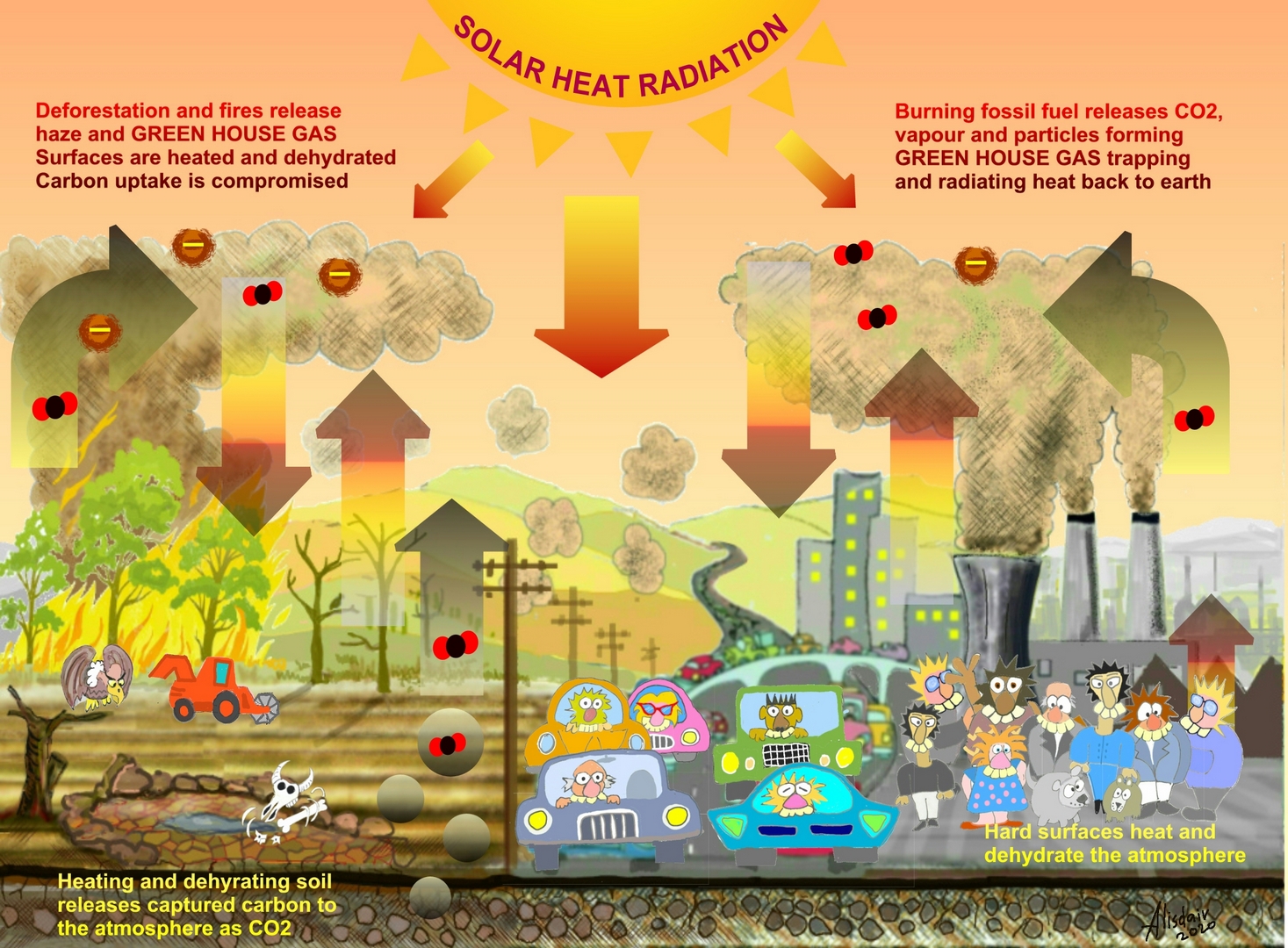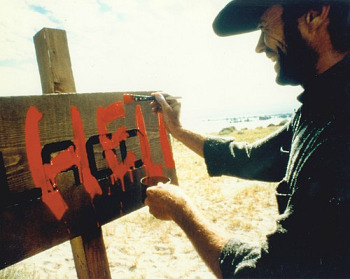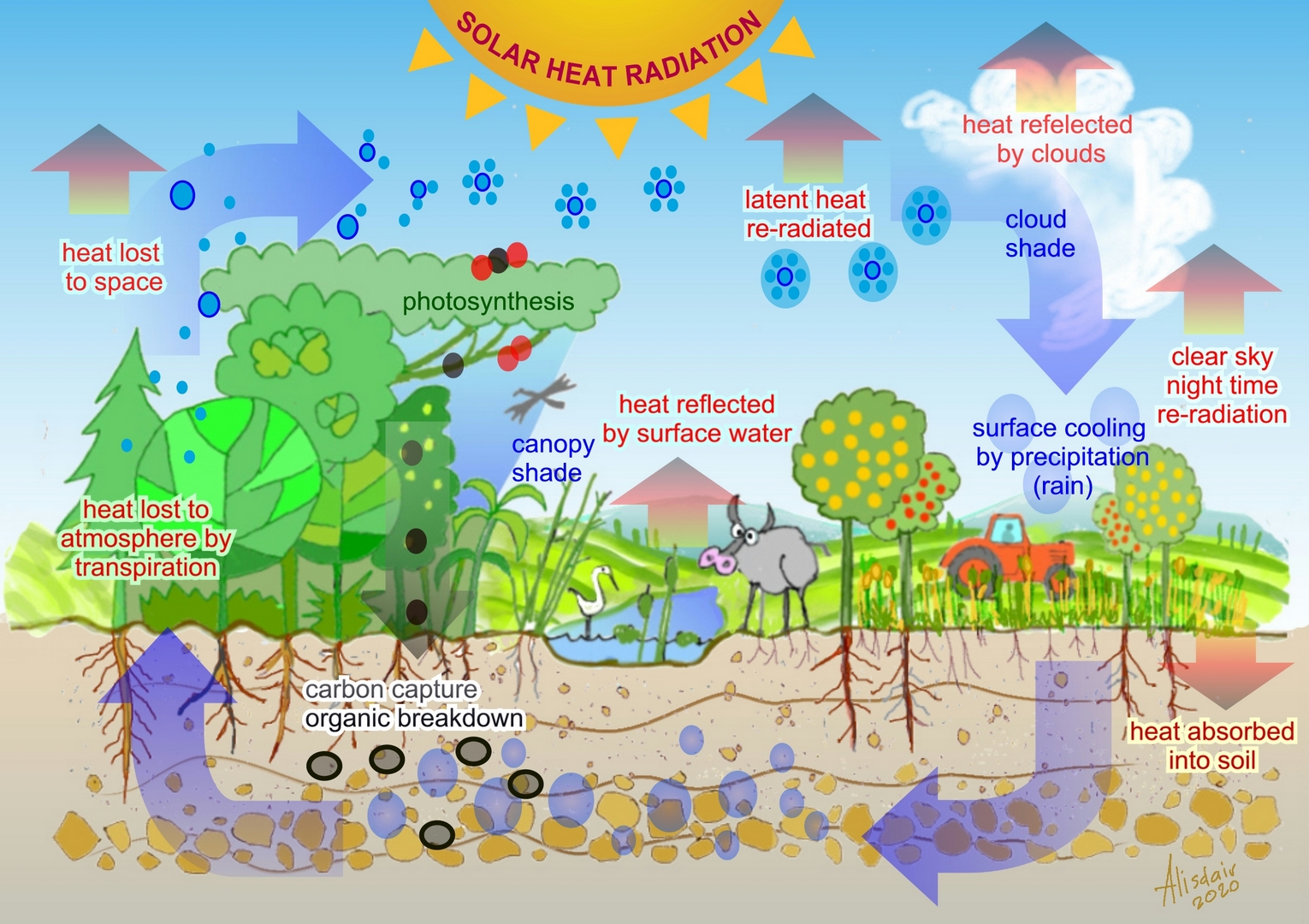
Source: Green Means Cool: Six Ways to Save the Planet (2020). Illustration by Alisdair Ferrie.
The last month taught us two things about Covid-19: We don’t know what’s going to happen next, and when something happens, events will move quickly. With those cautions in mind, I’ve written somber thoughts about what may lie ahead.
As an American living in Singapore, I view the crisis from two perspectives. The Singapore version isn’t as rosy as the US commentators portray: even as borders close, returning citizens and residents bring the virus home and infect others. We are coping well, but Singapore is also having to impose ever-greater restrictions on people and commerce to keep the spread rate manageable and flatten the curve. The US situation is analyzed to death in real time, and your speculations are as good as mine with regard to infection/morbidity rates, allocating blame and forming near-term coping tactics. But given the choice, I’m happy to live in Singapore.
Someday, this war’s gonna end.
Lt. Colonel Kilgore, Apocalypse Now
I assume developed world political economies survive this first onslaught intact with manageable fatalities and still (just) functioning health care infrastructures. This blog takes two peeks, one a half year from now, and the second into the middle distance of 2026. We begin with the confessions (and conversion) of a climate change dunce (me).
The 2020s will be remembered as a turning point. My suspicion is that we will later look back on Covid-19’s damages as mere inconveniences when compared to future starvation, mass migrations and political upheavals. The only alternative is to fund a world-wide Carbon Rollback Project which adopts two ironclad goals for 2030: permanently pull two hundred billion metric tons of carbon out of the atmosphere, and within three years cut annual net carbon emissions to zero from today’s plus-ten-to-fifteen billion metric tons. Only then does the planet begin to cool, the ice sheets stabilize and food production grow. The window for cooperation and unprecedented action is slamming shut. Until now, our governments haven’t acted. Maybe the coronavirus will be the catalyst for these planet-saving changes.
These are heady times for conspiracy novelists. Let’s just hope that life doesn’t overtake art yet again.
Bradley West
Singapore, March 25, 2020

Source: Green Means Cool: Six Ways to Save the Planet (2020). Illustration by Alisdair Ferrie.
CONFESSIONS OF CLIMATE CHANGE IGNORER
Until recently, I was a climate change ignoramus. I didn’t know much about it other than the Radical Left Lunatic Fringe left me cold. Trump’s statements in favor of more coal usage left me dumbfounded. The tribalism of the environmentalists versus the deniers repulsed me. The evidence in favor was suspect, particularly when you looked at paleo-climatology graphs (based on polar ice cores) which reveal very long and very sharp natural temperature cycles going back millions of years. Maybe manmade pollution was to blame for recent extreme weather events, but maybe it wasn’t: It all depended on what sources one looked at and what conclusions you were predisposed to favor.
My wake-up call came at year end 2019. Efforts to sell the Countless Lies series to Hollywood were in wait mode. A QR code on the back of a friend’s Christmas card piqued my interest, so I clicked through and downloaded a hefty (65 MB) file with links to almost two hundred scholarly articles. I read their draft report based on six months of research. A draft of Green Means Cool (www.greenmeanscool.com) showed me how dumb I was about the topic, while also confirming some of what I’d suspected:
- Much of what passes for climate “science” is better categorized as “belief” (politically charged, or otherwise).
- A lot of the so-called global warming science is exaggerated on both sides
- Media coverage of “global warming/climate change” focuses on reducing vehicle emissions, dismantling the oil & gas industries and promoting solar & wind green energy.
- In turn, almost nothing is published on the huge and growing stock of atmospheric carbon (as opposed to annual emissions), or the potential restorative roles to be played by improved soil microbiology, repaired water cycles, re-greening/anti-burning policies and improving degraded land via regenerative agriculture.
Most surprising of all was the realization of how dire the current situation is. I’d been reading off-and-on for thirty years that the sky was falling. After a while, I’d tuned out. Now it really was that bad . . . and Boomers like me had tuned out.
I don’t care if mankind hasn’t created any of the bad weather/global warming that’s plagued our recent past. That point of debate is irrelevant. All that matters is that mankind has to remove huge volumes atmospheric carbon or else rich and poor alike will lead diminished existences focused on staying alive.
I know, I know, conspiracy fiction novelists get carried away. Do yourself a favor. Spend a few hours on YouTube watching three must-see documentaries:
1. One-hundreds minutes watching Planet of the Humans (Planet of the Humans Michael Moore) to better understand how big business and NGO’s have co-opted the environmental movement, getting many things wrong in the process and distorting the public’s understanding of the real issues.
2. Ninety minutes on Netflix watching Sir David Attenborough’s swansong, A Life on Our Planet (view the trailer here: David A Life on Our Planet Netflix Trailer) to learn how in seventy years atmospheric carbon has jumped from 310ppm to almost 420ppm. (350ppm is the likely maximum safe amount.)
3. Twenty minutes watching a Cambridge professor of Ocean Physics describe his life’s work in a TEDx talk: Peter Wadhams A Farewell to Ice TEDx 2018.
These in combination, these three should scare the bejesus out of you. If not at least you’ll know what inspired this essay.
Maybe, just maybe, we’ll all learn from the current pandemic that actions benefiting the environment actually help us out, too. That looking after the “We” is sometimes more important than the “Me.” That our planet cannot sustain the current consumption-fueled economic model and ongoing population growth. That another (and deadlier) pathogen—aided by cataclysmic weather events—lurks over the horizon if climate change continues unabated.

Source: Green Means Cool: Six Ways to Save the Planet (2020). Illustration by Alisdair Ferrie.
NOVEMBER, 2020: “WELL, THAT SUCKED.”
As a thought experiment, consider the following state of the world in six months. Covid-19 killed one-to-two percent of most countries’ populations in the first wave of March-May 2020. Before end April, governments lifted what modest shelter-in-place restrictions still existed when the working poor could no longer afford to stay at home. Meanwhile, everyone waited . . . and waited for clinical trials to identify an effective, affordable vaccine. (That wouldn’t come until late 2021 for the wealthy, and 2022 for almost everyone else.)
People out of self-isolation and back in their workplaces meant that the virus re-emerged with a vengeance over the summer of 2020. The medical system was still on its knees from the first bout. The second and third waves only stopped when there was enough herd immunity to prevent further mass outbreaks. The cost, however, was a further three percent mortality rate, with fatalities spread across all age groups. Cumulative global deaths exceeded three-hundred-million, with the world’s poorest countries descending into Mogadishu-1993-Black Hawk Down-warlordism as twenty percent of their citizenries and thirty percent of health care workers died.
The erosion of civil liberties came swiftly with court decisions upholding governments’ rights to compel home confinement, track citizens via their cell phones and preemptively jail/detain the non-compliant or the high risk. Most voters supported the measures as they were tired of seeing their neighbors defying sensible instructions. To ensure public order, prohibitions against facial recognition, AI-driven software disappeared. Regime critics disappeared in certain countries.
Unemployment peaked at twenty percent at the end of the first round of infections, but never fell below the low teens after the second tsunami hit home in mid-year. Many white-collar employees took half-pay deals and worked from home permanently, expenses augmented by dwindling savings. By the time the third round of infections peaked in October, service businesses everywhere had learned to operate remotely.
Countries that hung on to the last—subsidizing their citizens even as credit lines were exhausted—emerged with the governments owning the majority of many sectors in return for bailouts. Fans of the measures dubbed them “state capitalism” and urged permanent retention of these controlling stakes to ensure a more compassionate corporate sector, and a fairer distribution of surpluses. Critics fell into two camps, those who decried creeping socialism and those who feared the re-emergence of fascism. Stock markets stayed down.
International travel evaporated in March and stayed moribund due to a combination of closed borders, an absence of travelers and bankrupted airlines. This helped slow the virus’s spread, but, with lowered air freight capacity, what little aid was available to help the worst-affected countries sat on runways and in warehouses. Millions more of the world’s poorest people needlessly died because of a lack of healthcare protective gear, basic medicines and ventilators.
Meanwhile, 2020 proves to be the hottest year on record with droughts, fires and other extreme weather events piling misery onto populaces already weakened by the pandemic.
* * * * *
As November dawns, the US electorate faces stark choices. With Covid-19 felling the first nominees from each party, their replacements were forced to endorse 100% of the polarized platforms foisted on them by kingmakers, lobbyists and fixers.
The only areas of cross-party agreement are a full-scale retreat from globalization. With the new nationalism comes mandatory domestic sourcing requirements in health care, strategic industries (not just defense), and bailed-out firms. The Democrats want senior management salary caps, higher minimum wages, New Deal-style employment programs, price controls on basic materials and universal health care. The Republicans promise greater spending on law-and-order, minimal new taxes, immigration bans, higher tariffs and the withdrawal of overseas US military presence. Pollsters report the election too close to call.
Somewhere in East Asia, a vendor in an illegal wildlife market drops a cage of civets, popping the door open. One frightened animal takes refuge in a chicken coop and bites a half dozen chickens before the owner bludgeons it to death with a shoe. The chicken seller culls the visibly bleeding fowl and leaves the rest alone . . . .
APRIL, 2026: WE DIDN’T REALIZE
HOW GOOD WE HAD IT
Welcome to Hell.

Source: www.thelongtake.net
As a thought experiment, consider the following state of the world in six years. Looking back on 2020, six years’ hindsight conveys hard-earned wisdom and many regrets. First among them is the now universal realization that, well before the coronavirus, the cumulative unchecked levels of permanent atmospheric pollution—mostly CO2 but also methane, pirate CFCs, sulfur- and nitrogen-based contaminants, and fine particulates—had foreordained our shared destiny. The result was increasing temperatures, destructive weather events and famine which in turn spurred mass migrations, wars and the end of many democratic governments.
Academics would debate whether any political figure from history—much less the mediocre talent available in 2020—could have persuaded global governments to set aside their differences and sign up for the Carbon Rollback Project. The international supply chains that fueled our consumer-led economies were too fragile, and the consumers too indebted to withstand the pandemic and keep the previous economic system intact. (This was one of the few bright spots.)
Our elected leaders failed to broadly implement the lessons Covid-19 had taught voters across the political spectrum:
- Health is more important than consumerism. We can live without a lot of the luxury items we take for granted, reducing our personal energy consumption and environmental load.
- Helping other people is the right thing to do. There’s nothing like a series of crises to drive home the benefits of being good friends and neighbors
- Greater self-sufficiency pays off. Walk or cycle; grow your own vegetables; mend and repair instead of discard and buy again.
Mankind needed a different ethos and a much-modified political and economic model if seven and a half billion people pre-pandemic were to coexist in an era of diminished food security, irregular access to power and deteriorating civil order. Unfortunately, electorates didn’t insist that their leaders invest on a scale large enough to reverse the levels of atmospheric carbon, protect the remaining polar ice and glaciers, and re-green the planet.
In those brief years between 2020 and 2026, our collective failure led to the melting of the polar ice, the release of billions of metric tons of even deadlier methane, and sea levels that jumped many meters more than models predicted. A dozen island nations disappeared along with lower Manhattan, Mumbai, Miami and Bangladesh. Higher water temperatures accelerated acidification and supplies plummeted of ocean-sourced food.
Away from the coasts, a higher proportion of the planet was at risk from crop failures. Individuals didn’t trust the authorities’ ability (or in some cases, willingness) to protect them, and banded together into family-centric and community enclaves. Initially, food theft was achieved without violence, but then in the absence of central authority the weak armed themselves and fought back. Cities and suburbs began to empty out as people tried to escape the violence. They raised much of their food, untrusting in the supermarkets’ promises that the shelves would be restocked soon . . . soon.
International cooperation, already frayed by the coronavirus, crumbled as UN deliberations became an unaffordable luxury. Even in the OECD countries, some banks failed and barter made a comeback (augmented by precious metals and crypto-currencies). International financial flows withered along with trade. Even as industrial output fell, carbon pollution increased anew with no supranational body in a position to set or enforce environmental standards. Strongmen seized power or militaries assumed command in many democracies. Countries with strong armies occupied weaker, resource-rich nations.
AN ONCOMING TRAIN IN THE TUNNEL . . . OR IS THAT A LIGHT?
You think I’ve lost the plot, don’t you? I hope I have, but that hasn’t stopped a half-million people from downloading British professor Jem Bendell’s Deep Adaptation: A Map for Navigating Climate Tragedy (Deep Adaptation download PDF) since mid-2018, spurring many to reconsider their lives in the face of almost certain climate catastrophe. Dr. Bendell’s plea to halt climate change before it forces the world into chaos has had an impact on my thinking. He’d spent his entire career in development economics and sustainability. In early 2018, he realized it was too late to save the world as we know it. Too many things were out of kilter, too many political-business relationships unchangeable, and too little political vision on display from multi-lateral elites. He threw in the towel, wrote his seminal white paper and has been campaigning ever since to prepare us for the inevitable, wrenching changes to our lives.

Source: Green Means Cool: Six Ways to Save the Planet (2020). Illustration by Alisdair Ferrie.
Is there hope? Of course. There are plenty of scientists, charities and NGOs who have formulated workable solutions as long as they are massively implemented in parallel without delay. If done at sufficient scale, these would save the planet at an affordable cost and within most of our lifetimes. I’ve spent the last three months working with a group of Singapore-based expatriates to better understand the magnitude of risks we face and possible solutions. If you have a chance, flip through the Green Means Cool website and see what you think (www.greenmeanscool.com).
What’s the hitch? There’s a long to-do list that will be difficult to implement, particularly given the decades of inaction which brought us to where we are today. We will need to change how we farm, what we eat, stop burning, stop cutting down tropical rainforests, drive much less . . . you’ve read these things before . . . but this time, the lunatic fringe Eco-Crazies are right, and the alternative is so awful that we have no choice if we want to avoid living in Cormac McCarthy’s horrific dystopia.

Source: The Road Cormac McCarthy Amazon.com
In case you aren’t familiar with the world of preppers, now might be a good time read up. There’s a sane website at www.theprepared.com. In particular, download the two free articles Prepping for Beginners (Prepping for Beginners) and Emergency Survival Kit List 2020 (Bug Out Bag Checklist).
